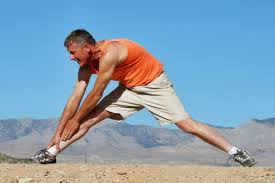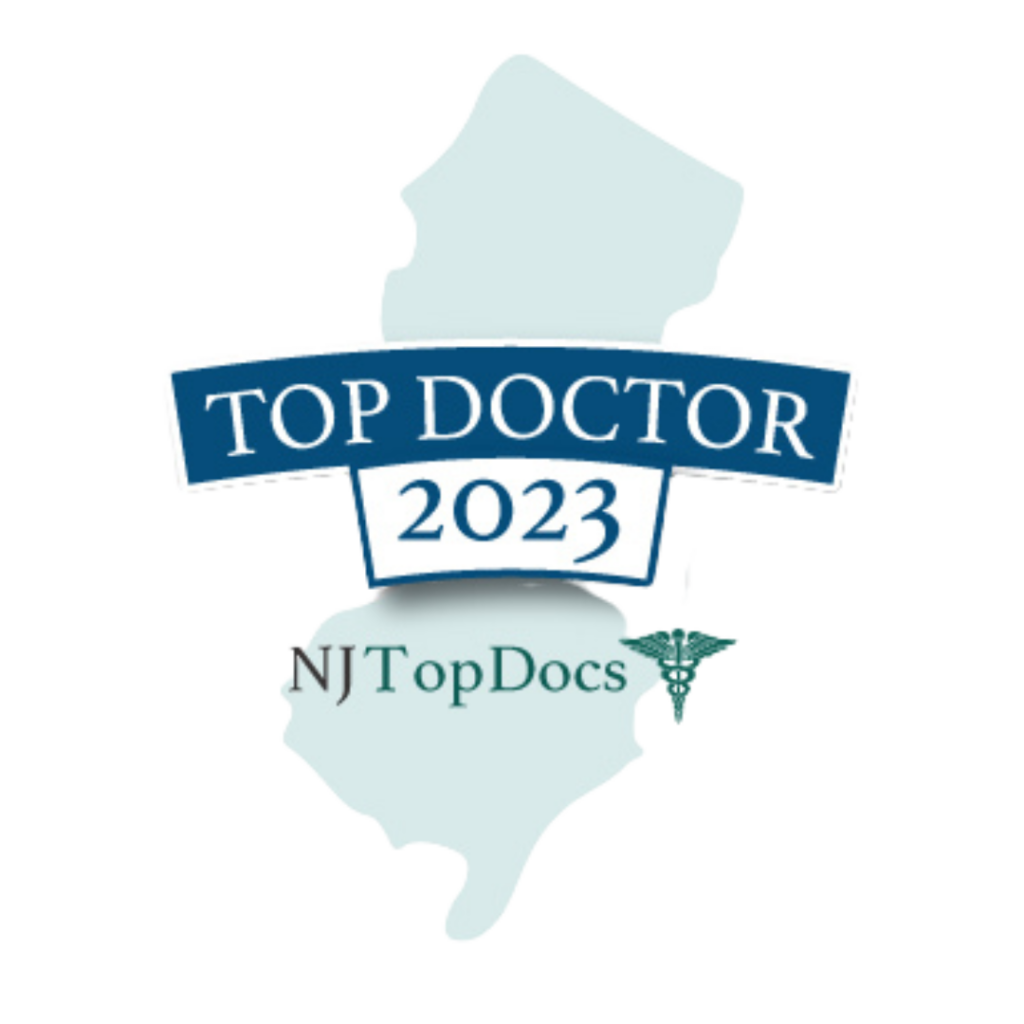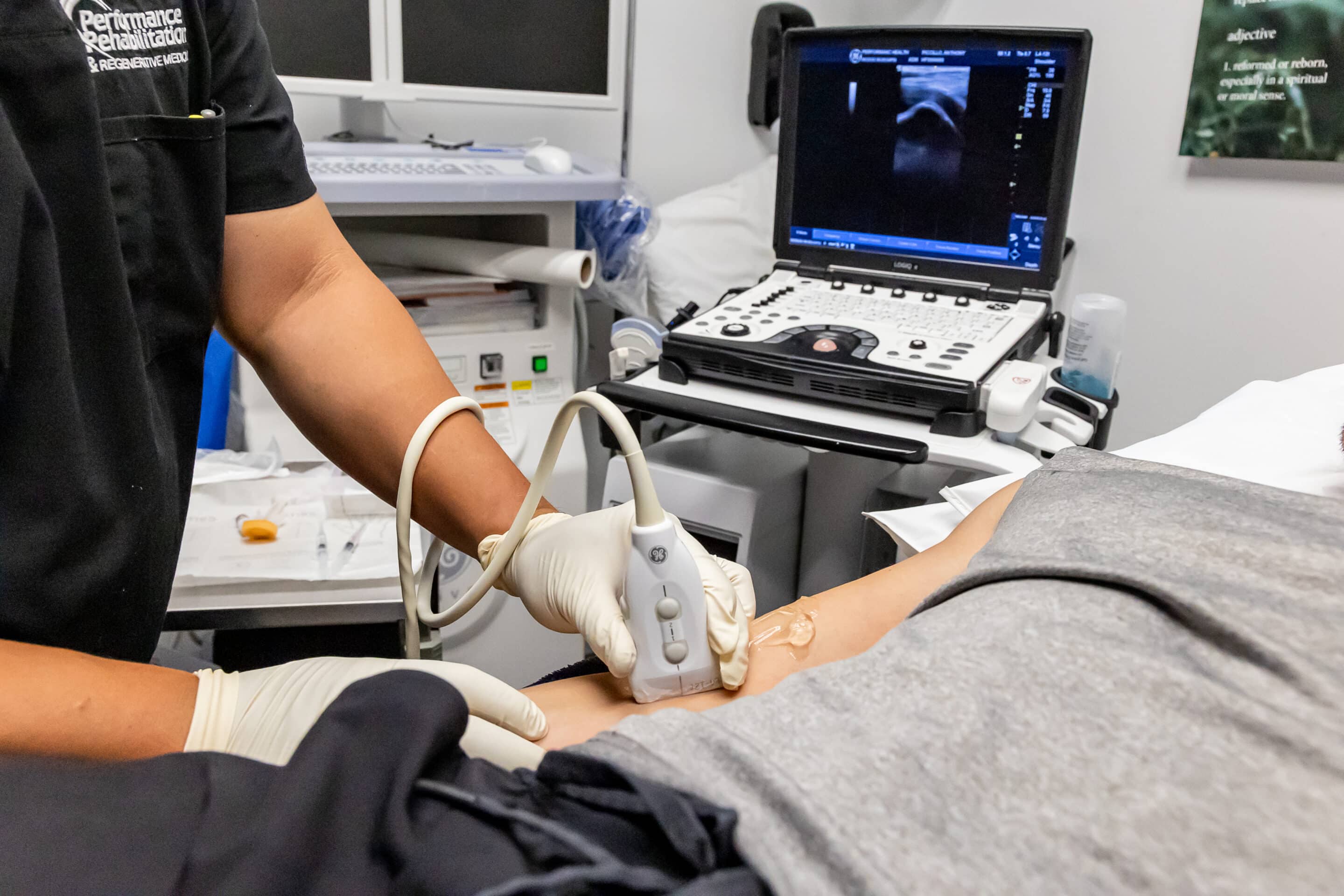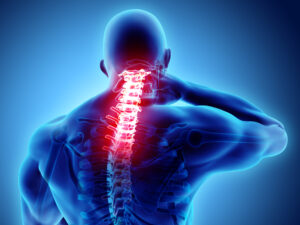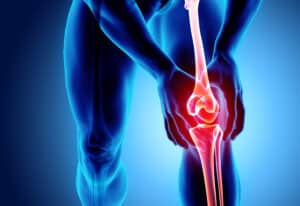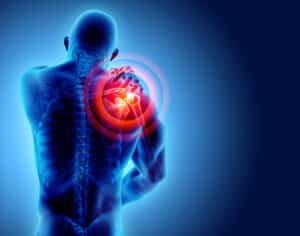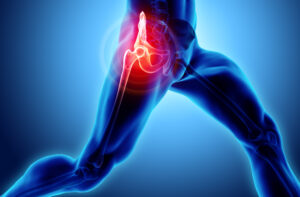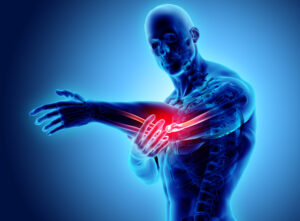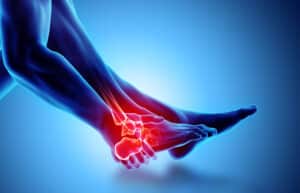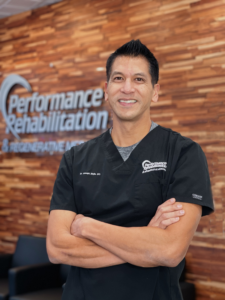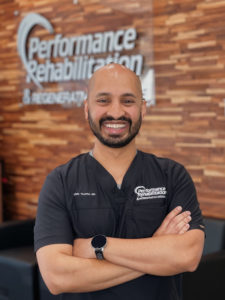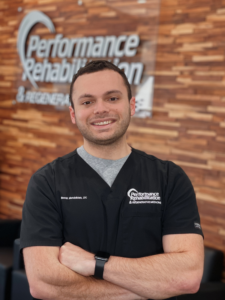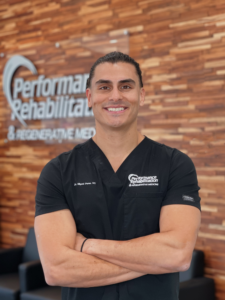Stem Cell Therapy as an Alternative to Hip Replacement
New advances in Regenerative Medicine, including stem cell and platelet-rich-plasma (PRP) therapy, are demonstrating promising results for patients suffering from mild to moderate osteoarthritis of the hip. This breakthrough treatment offers options for patients that are not candidates for a hip replacement or wish to exhaust every non-surgical intervention prior to considering aggressive surgical procedures.
Osteoarthritis (OA) is estimated to affect 52.5 million Americans, as they age. The typical symptoms of OA of the hip include: groin and thigh pain, pain of the lateral side (outside) of the hip, low back or glute. Symptoms are typically worse with walking, standing and stair climbing and are often temporarily relieved by rest and anti-inflammatory medications.
What is osteoarthritis?
This is one of the most common questions we are asked by patients. It is a simple question with a not-so-simple answer. There are over 200 types of arthritis, the most common by far being OA. In the most basic terms, OA is a break down of the joint cushioning cartilage surrounding bones and joints. Many factors can contribute to OA, including aging, excessive weight, prior trauma or surgeries. In essence, the loss of articular joint cartilage and the natural lubricating protection that it provides are often responsible for the intense pain, loss of movement and function that is so common with the OA patient. Patients often will experience the associated symptoms of OA, which may include pain and swelling in the affected joint, joint enlargement or “cracking and popping” sounds with movement. OA is more often found in weight bearing joints such as the hip, knee and spine, however it can also be found in the hands and shoulders.
Traditional Treatment options:
Until recent advancements in medicine, patients suffering the life altering results of OA had limited non-surgical options. Common medical management includes NSAID’s (anti-inflammatory medication), analgesics, cortisone injections , Chiropractic treatment and physical therapy. Over the last ten years, researchers and physicians have been able to harness the body’s own natural healing abilities found in stem cells and growth factors to successfully manage chronic degenerative conditions like OA.
The Future of Non-Surgical Orthopedics: Stem Cells
Mesenchymal Stem Cells (MSC’s) are showing the most promise in treating OA. These special cells can be obtained from the patient’s own bone marrow or adipose (fat) tissue and have the unique ability to differentiate into any tissue type on to which they are grafted. This is essential for regenerating and repairing dysfunctional damaged cartilage tissue that is found in OA of the hip.
The donor sites for stem cells are typically the hip or lower leg for bone marrow and the buttock or abdomen for adipose. Once the physician obtains the stem cells they are processed in the office the same day to create a healing matrix of stem cells. The stem cell matrix is then grafted (injected) on to the injured site with the help of ultrasound-guided imaging. The stem cell graft injection is immediately followed by a platelet-rich-plasma (PRP) injection, following similar procedure as stem cell preparation. The doctor will advise the patient to immobilize and rest the region for several days to ensure the graft doesn’t dislodge.
Why PRP?
The most recent research is proving that PRP has highly concentrated amounts of growth factors and other bioactive proteins that are necessary for healing. It is believed that PRP “activates” the stem cell to proliferate into the needed tissue (cartilage in this case) type. PRP is believed to provide substantial anti-inflammatory properties with long-lasting pain relief which is far greater than cortisone.
Four to six weeks after the first PRP injection, the doctor may advise a second PRP treatment to continue the healing process. A common metaphor that is used to help explain the process is the stem cell is analogous to lawn seed and the PRP is the fertilizer. Both are essential for the complete repair and healing of tissue.
Our Experience:
At Performance Rehabilitation & Regenerative Medicine we have been performing Regenerative injections for more than 4-years, with excellent results. Our approach combines regenerative injection therapy as part of a total integrated non-surgical solution, which will often include physical therapy, acupuncture, or one of our other specialties.
If you are considering hip replacement surgery or have been told you are not a candidate and you must live with the pain and limited function, please contact one of our Patient Care Coordinators for a consultation at 908-756-2424 or you may contact us online.
About the author
Joseph Mejia D.O., F.A.A.P.M.&R, Is a graduate of University of Michigan and West Virginia School of Osteopathic Medicine. He is Board Certified in Physical Medicine & Rehabilitation and Sports Medicine. Dr. Mejia received his Fellowship Training in Interventional Pain Management from University of Medicine and Dentistry. He has advanced training in Regenerative Medicine and is the Medical Director and Partner of Performance Rehabilitation and Regenerative Medicine.
